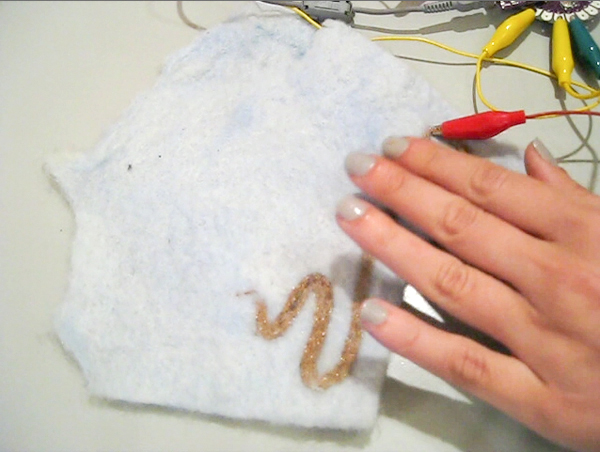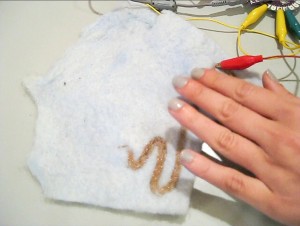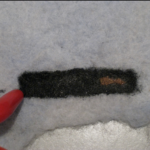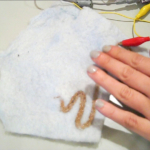I found Paul’s capacitive sensing code before he wrote the library in 2008 and tried it out.
I used the same setup except with a needle felted trace I used bronze wool for. I was able to get the sensor to work, it didn’t have much capacitance, I used a 10 Megohm R, which was meant to produce a 2-4 inch away activation. I was able to activate the switch (turn it to 0) when I was grazing the material. However, i was able to change the values before hitting zero from 1-2 inches away.
This is a result I want, analog rather than digital. Only thing is the readings are not stable and the range varies. Plus I still get the 0 happening which would cut any smooth reading output short.
I then found his library and tried that with a 10 Megohm. The reading is incredibly slow. It’s recommended to put a 100 p to .01 mF cap between the sensor pin and ground, when I did that, it made the values go from 0 up really high and did not smooth out values. I gave a 561 (560 p) cap a try there and then switched it going from my sensor to ground, values went up and the values registered as going up when touching to not working at all and registering the default -2 value in my serial when there is not a sensor hooked up to a pin.
Later on I made a carbon paint contact with a needle felted section that was meant to give me a field of resistance difference if I wanted to change pitch quickly while still touching the surface.
UPDATE:
I commented out the pins that are not being used, I thought the unreliable and quirky performance above was probably due to all the noise I would be getting, especially since it occurred to me that I was using a LilyPad and the conductive pads are exposed. Performance is back to a reading per ~10 millisecond and the range is smooth and usable. Makes sense now 0_0
Turned a needle felted design using bronze wool with the CapSense library in arduino and the tone() function.
Carbon based ink is used to create a base for the capacitive sensor with a needled felted switch that jumps the pitch up when touched compared to the resistive ink. Used the CapSense library in arduino.




